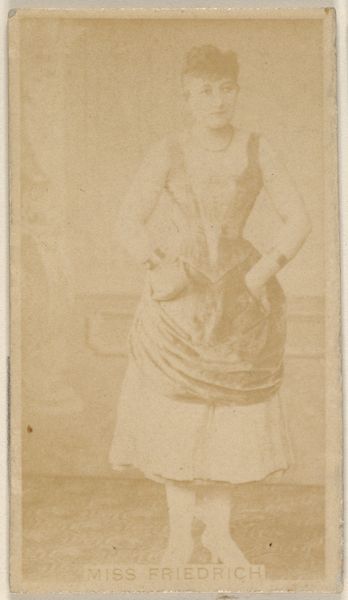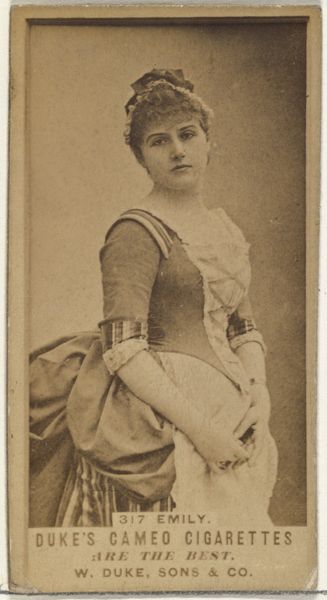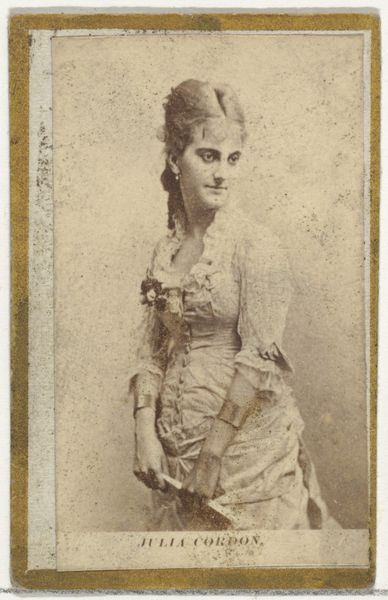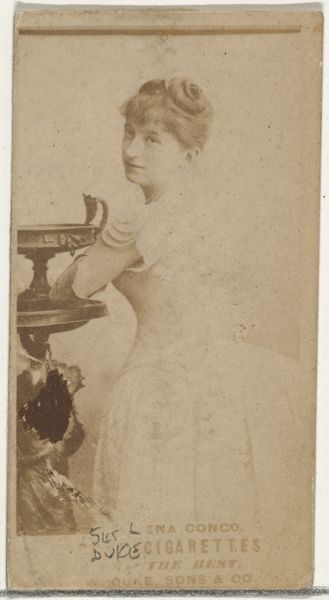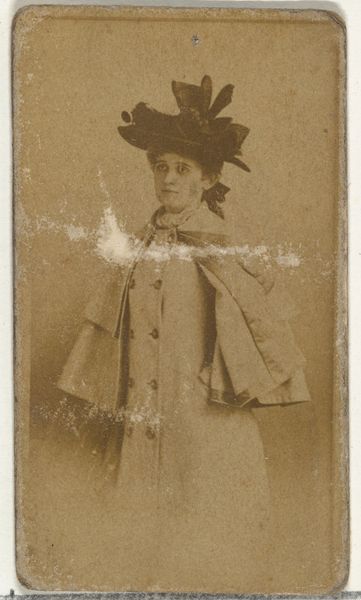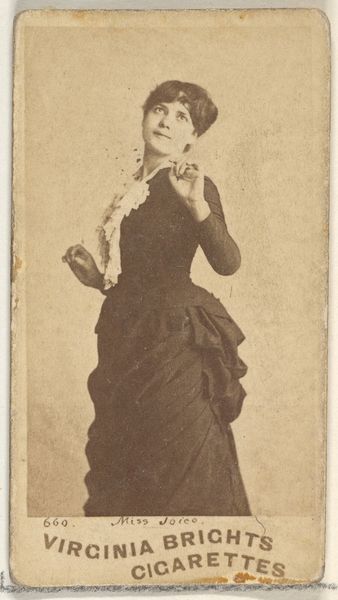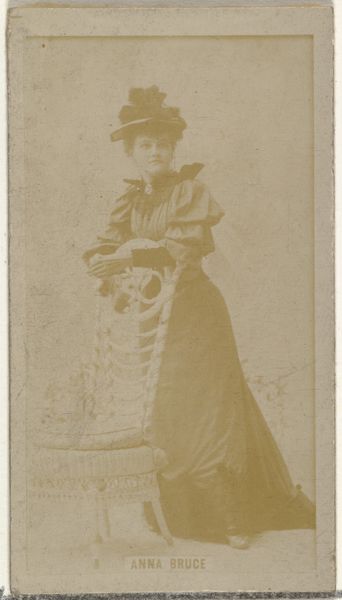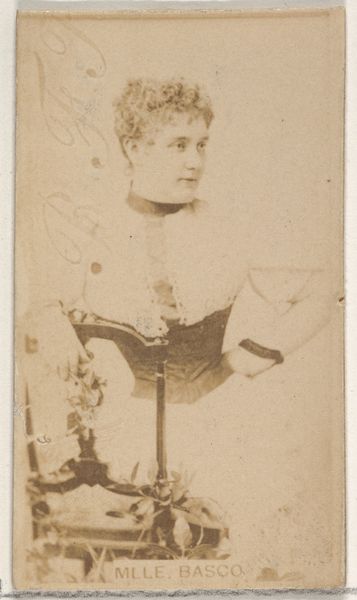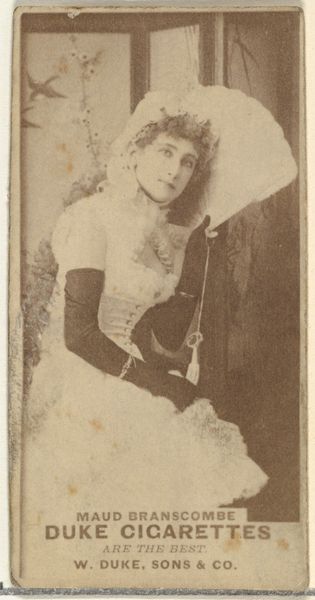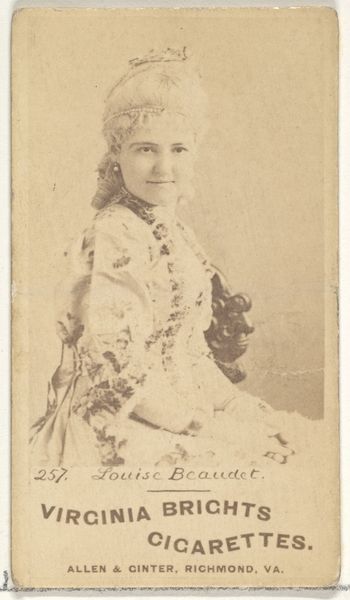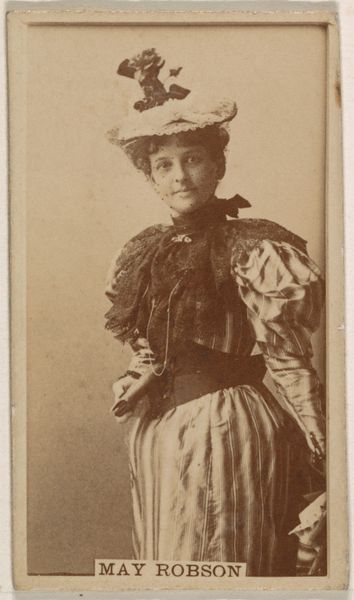
Helen Hudson, from the Actors and Actresses series (N45, Type 1) for Virginia Brights Cigarettes 1885 - 1891
0:00
0:00
drawing, print, photography
#
portrait
#
drawing
# print
#
photography
#
profile
Dimensions: Sheet: 2 3/4 x 1 3/8 in. (7 x 3.5 cm)
Copyright: Public Domain
Curator: This delicate card, housed here at the Metropolitan Museum of Art, is one of a series produced by Allen & Ginter between 1885 and 1891, featuring Helen Hudson, a performer of the time. Editor: She looks formidable, doesn’t she? Her severe gaze and elaborate hat project an air of self-assurance, almost defiance. The sepia tone lends it a sense of nostalgia, too, like looking back at a bygone era. Curator: Absolutely. These cards, inserts for Virginia Brights Cigarettes, were actually small portraits celebrating women prominent in theatre. Consider their distribution; suddenly these actresses are in spaces of commerce, in the hands of ordinary smokers. The politics of celebrity are certainly at play. Editor: Exactly! And thinking about those spaces—the corner stores, the pockets and purses of people going about their daily lives. What did it mean for Helen Hudson's image, her personhood, to be circulating in this way, tied to the tobacco industry, to male consumption? It adds layers of complexity. We must remember her subjectivity in this entire operation. Curator: Precisely. These cards helped democratize imagery. In an age before widespread photography, they offered a glimpse into the lives—or rather, curated personas—of stage actresses, available to the average citizen. We might explore questions about spectatorship and class privilege. Editor: It’s interesting how the image plays with these notions. Is it about admiration, objectification, empowerment? It’s not simple, of course. This "actress" now an actor in commerce reveals late 19th-century patriarchy and celebrity and is yet, somehow, defiant. A cultural commodity—an early trading card—of empowerment and restriction. Curator: It highlights the blurring lines between artistry, industry, and social accessibility. Helen Hudson as a touchpoint allows one to contemplate fame, gender, and the commodification of identity within entertainment in the 1890s. Editor: Definitely, it invites us to dissect this complex web and ask hard questions about power, agency, and representation during this transitional period. The more I ponder Helen’s gaze the more intrigued I am by its layered meanings.
Comments
No comments
Be the first to comment and join the conversation on the ultimate creative platform.


